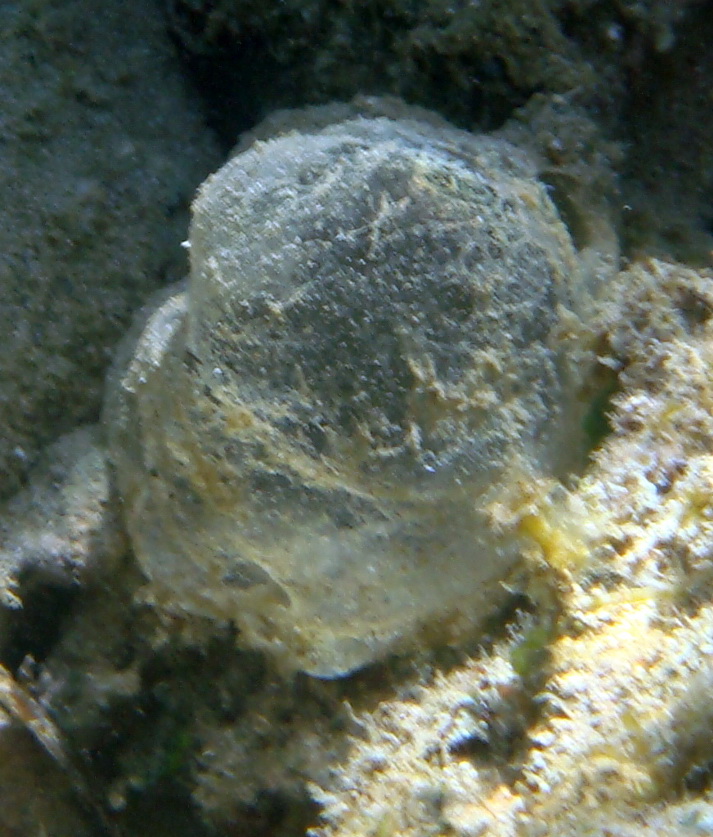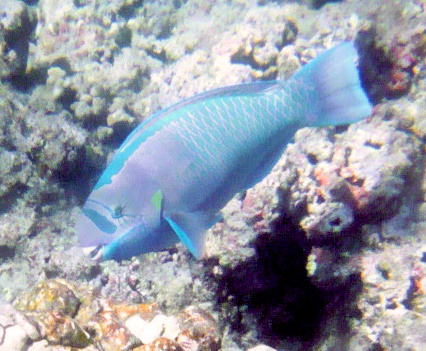Published in the Ocean Watch column, Honolulu Star-Advertiser © Susan Scott
March 24, 2014
While snorkeling in four feet of water off Kauai’s North Shore, readers John and Heather Riggins found a blob.
John emailed me a slightly blurred photo of it, describing it as “4 to 5 inches in diameter and slightly transparent. It appeared to be pulsating (that could have been from current but nearby algae and sea grasses were not moving). The pulsating made the object appear to be alive.”
John and Heather thought this might be the nighttime cocoon of a parrotfish.
 The Riggins’ blob.
The Riggins’ blob.
Courtesy Heather Riggins
Digging into that subject, I was soon immersed in the extraordinary world of parrotfish where changing sex, manufacturing sand and oozing sleeping bags is all in a day’s work.
Of the 90 species of parrotfish in the world, Hawaii hosts only seven. Of those, three — yellowbar, spectacled and regal — are found only in Hawaii.
Good luck identifying these striking natives.
Parrotfish change colors like Lady Gaga changes hairstyles. A fish’s colors and patterns vary widely in a single species depending on age, activity, surroundings and sex.
To further complicate matters, two parrotfish species occasionally produce hybrids.
And speaking of sex, talk about hormone storms. Some parrotfish females change to males as the need in a population dictates.
Those fish, called supermales, establish territories and keep harems.
Parrotfish are grazers, scraping algae off rocks and dead coral, and sometimes eating live coral. Big parrotfish (Hawaii’s largest, the spectacled, grows to 26 inches long and weighs nearly 15 pounds) have powerful jaws and strong dental plates that remove bits of coral skeleton as they eat.
When snorkeling, you can hear the crunch as nearby parrotfish bite down. Their “beaks” leave distinct marks on the rock.
 Parrotfish.
Parrotfish.
Courtesy Scott R. Davis
The stony material that a parrotfish swallows gets ground into fine particles in the fish’s throat, passes through the digestive system and out the anus. In this way, parrotfish are major producers of sand.
Come dusk, some parrotfish make themselves a sleeping bag for the night. Glands near the gills produce mucus that exits through the mouth. It takes a parrotfish about 30 minutes to encase itself in this clear, 3-inch-thick sac that has two holes for breathing.
Researchers believe the cocoon protects the parrotfish from nighttime parasites as well as predators, such as moray eels, that hunt by smell. Come dawn, parrotfish abandon their sleeping bags, which, being made of mucus, dissolve in the water.
I don’t know what’s more remarkable: transgender fish, pooping sand, mucus pajamas or that after all my searching, I still have no clue about the identity of John and Heather’s blob. Help is welcome.